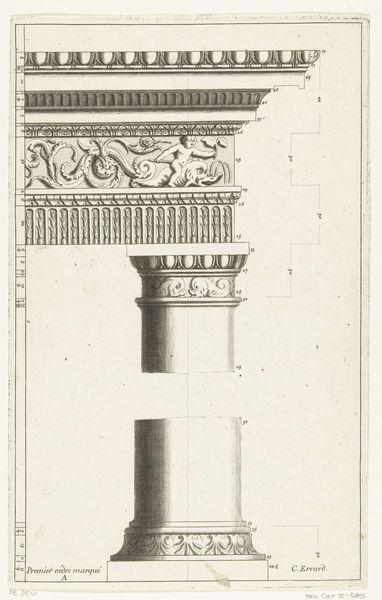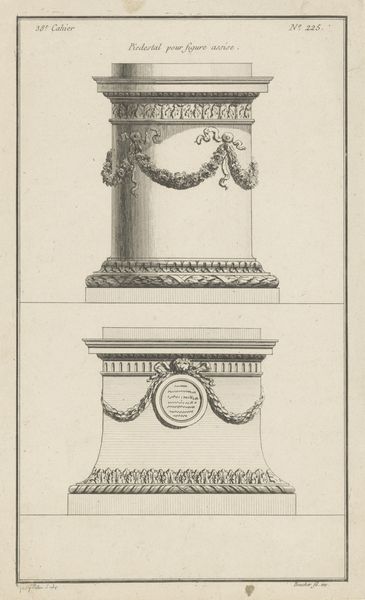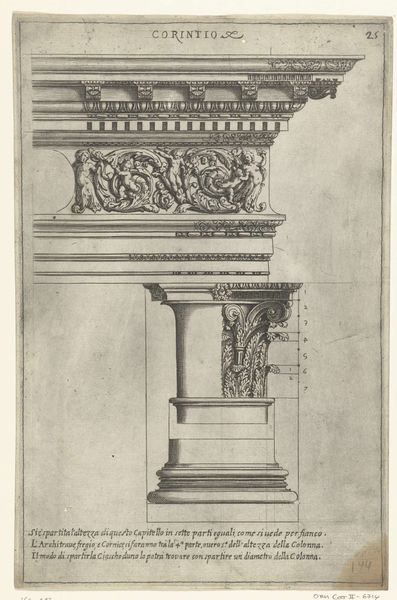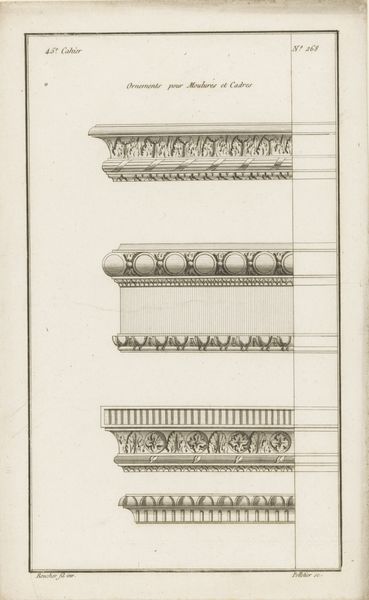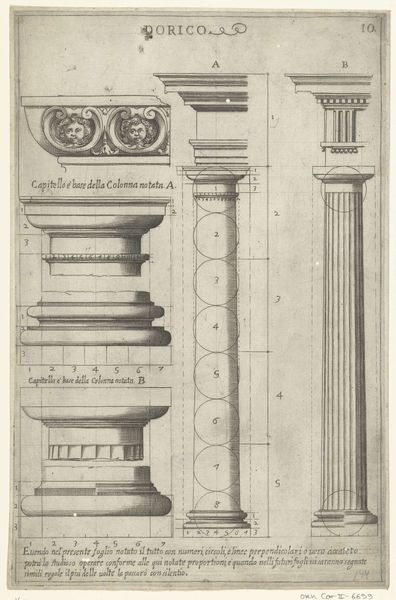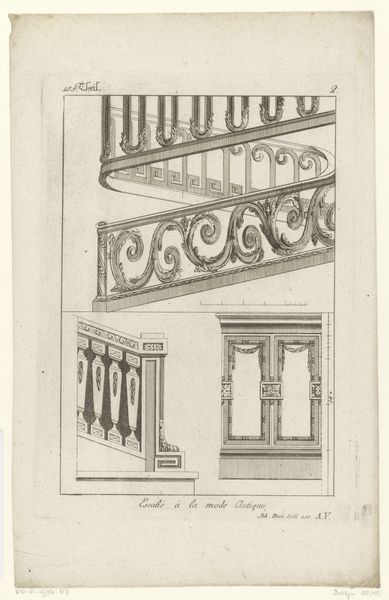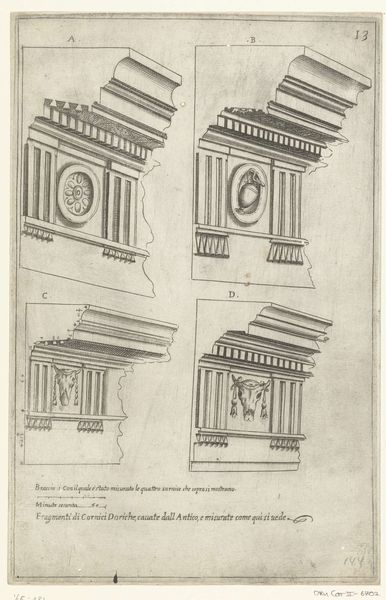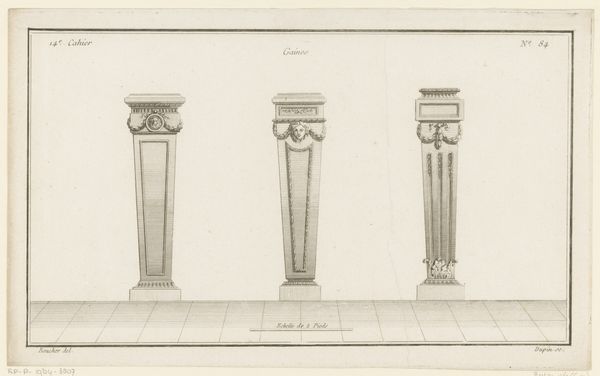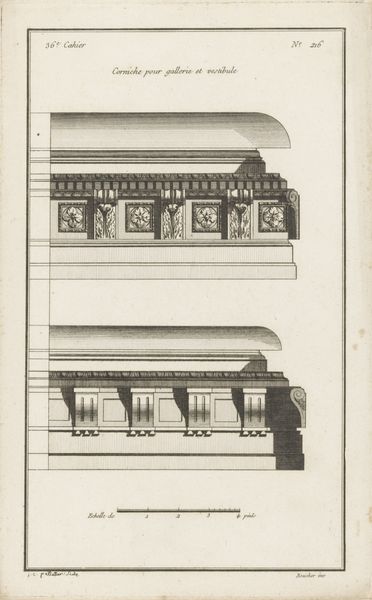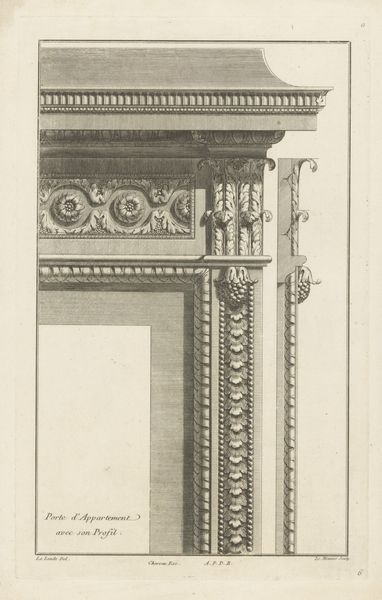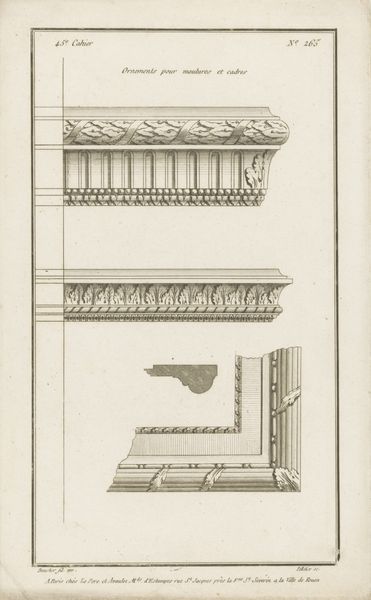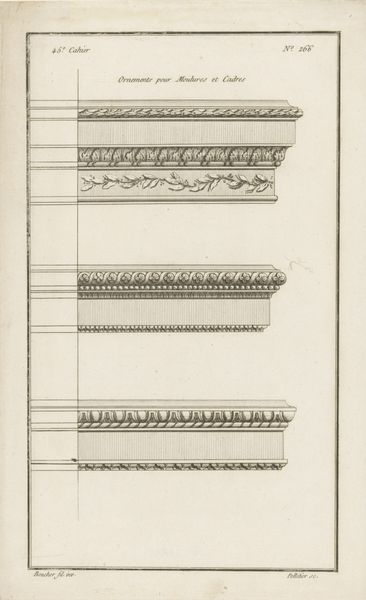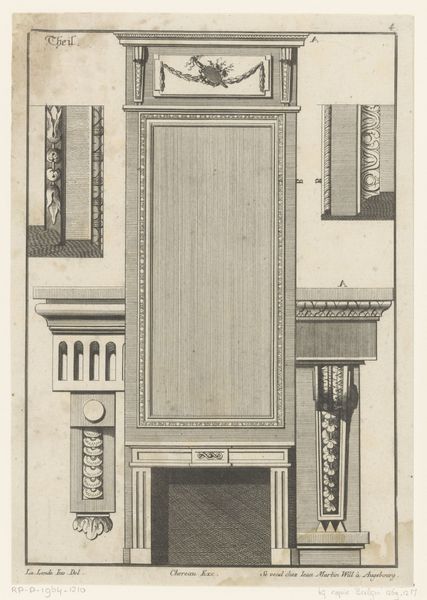
drawing, print, paper, engraving, architecture
#
drawing
#
baroque
# print
#
paper
#
form
#
geometric
#
line
#
engraving
#
architecture
Dimensions: height 277 mm, width 180 mm
Copyright: Rijks Museum: Open Domain
Curator: Here we have "Seventeen Tuscan and Doric Capitals," a print dating back to 1636. The anonymous artist meticulously rendered these architectural details, showcasing a variety of classical column tops. Editor: Well, right off the bat, it feels… austere. It's almost clinical, this orderly arrangement of forms. Very black and white, literally and figuratively. What were these prints meant for, exactly? Curator: Architectural pattern books, mostly. A craftsman or builder could consult these to ensure proper classical details in their designs. They democratized the knowledge of classical forms, spreading a certain visual language across Europe and beyond. Think of them as proto-IKEA instructions, but for grand palazzos! Editor: Ha! Okay, I see that. So, it's about the distribution of knowledge, of making these "high-art" elements accessible, almost mass-producible. It brings up interesting questions about skill—how much craft is *really* needed when you have such explicit guides? Did this shift in production change perceptions of labor and value? Curator: That's a fantastic question! There's definitely a tension between the highly skilled artisan and the more general builder who relies on these visual aids. But consider the original production itself— the copper plate engraving to transfer the image! A fascinating interplay of mechanical reproduction and the human touch. And look closely at each capital— they are the same but somehow different from one another—a dance of pure geometry. Editor: And what about the material reality of it? It’s paper and ink now, consumed, collected. We should really reflect on the source of both; consider that textiles were historically traded for paper, as well as the socio-economic realities impacting ink recipes and dye use. It all ties in! Curator: Fascinating. Seeing them arrayed together this way— divorced from their intended monumental scale— it gives me a different perspective of these grand motifs as artistic abstractions. A study on architectural shape itself! Editor: Indeed! It reveals how “dissemination” also has inherent implications involving social labor, mass production, and value judgments. Thank you for that vision. Curator: Thank you. It gives an intimate connection to history when you know the many sources connected to the work!
Comments
No comments
Be the first to comment and join the conversation on the ultimate creative platform.
